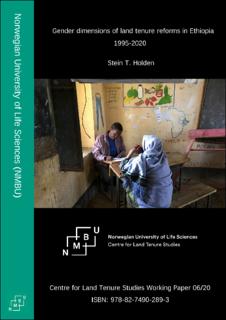Location
The Norwegian University of Life Sciences (Norwegian: Norges miljø- og biovitenskapelige universitet, NMBU) is a public university located in Ås, Norway. It is located at Ås in Viken, near Oslo, and at Adamstuen in Oslo.
Established in 1859 as the Norwegian Agricultural Postgraduate College, it became a university-level university college (vitenskapelig høgskole) in 1897 and received university status in 2005. Prior to 2005 it was known as the Norwegian College of Agriculture (Norges landbrukshøgskole, NLH). Only a few years later, in 2014 the university merged with the Norwegian School of Veterinary Science (NVH) in Oslo, and is today known as the Norwegian University of Life Sciences. Having a history since 1859, it is the second oldest institution of higher education in Norway, after the University of Oslo.
NMBU's research is enabling people all over the world to tackle the big, global challenges regarding the environment, sustainable development, how to improve human and animal health, renewable energy sources, food production, and land- and resource management.
Norwegian University of Life Sciences mission
To contribute to the well-being of the planet. Our interdisciplinary research generates innovations in food, health, environmental protection, climate and sustainable use of natural resources.
Members:
Resources
Displaying 6 - 10 of 14Gender dimensions of land tenure reforms in Ethiopia 1995-2020
This chapter investigates how land tenure reforms in Ethiopia have influenced the position of women in terms of land tenure security, access to land, decision-power over land within households, as well as the gendered impacts of these tenure reforms on land investments, land productivity, land renting, and household consumption welfare. It is based on a careful screening of the relevant literature based on its quality and critically examining the reliability of the causal effects in each study.
The Roles of Land Tenure Reforms and Land Markets in the Context of Population Growth and Land Use Intensification in Africa
This article reviews the past and potential future roles of land tenure reforms and land markets in Sub-Saharan Africa (SSA) as responses to population growth in the process of land use intensification and livelihood transformation. The farm size distribution and the existence of an inverse relationship (IR) between farm size and land productivity in SSA and the implications of this relationship for efficiency and equity are investigated.
Caste discrimination, land reforms and land market performance in Nepal
The caste system is an intricate part of the institutional structure as well as class formation, political instability and conflicts in Nepal. The most severely discriminated group in the caste system is the Dalits, the so-called “untouchables”. Dalits faced religious, occupational and even, territorial discrimination. They were traditionally excluded from receiving education, using public resources, and had no rights to own land.
Caste, Land and Labor Market Imperfections, and Land Productivity in Rural Nepal
This paper provides new evidence on the caste-related land productivity differential and its explanations in rural Nepal using household plot panel data. Low-caste households are found to have significantly higher land productivity on their owner-operated plots as compared to high-caste households. A comparison between the rented in land of low-caste and the owneroperated land of high-caste households showed that the former has significantly higher land productivity. No significant Marshallian inefficiency was found in the case of low-caste tenant households.
Can land registration and certification reduce land border conflicts?
This paper assesses factors related to local land border conflicts and how low cost land registration and certification has affected land conflicts during and after land registration and certification using data from northern Ethiopia. Border conflicts were more common near district centers, further away from markets, and where property rights had been redistributed more recently.



